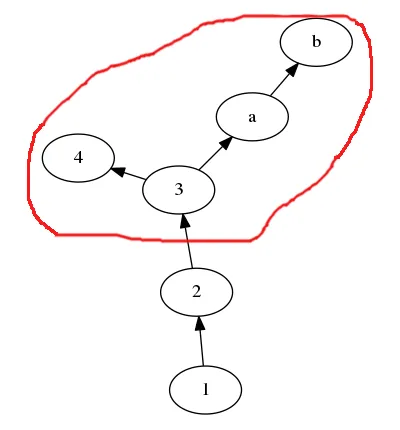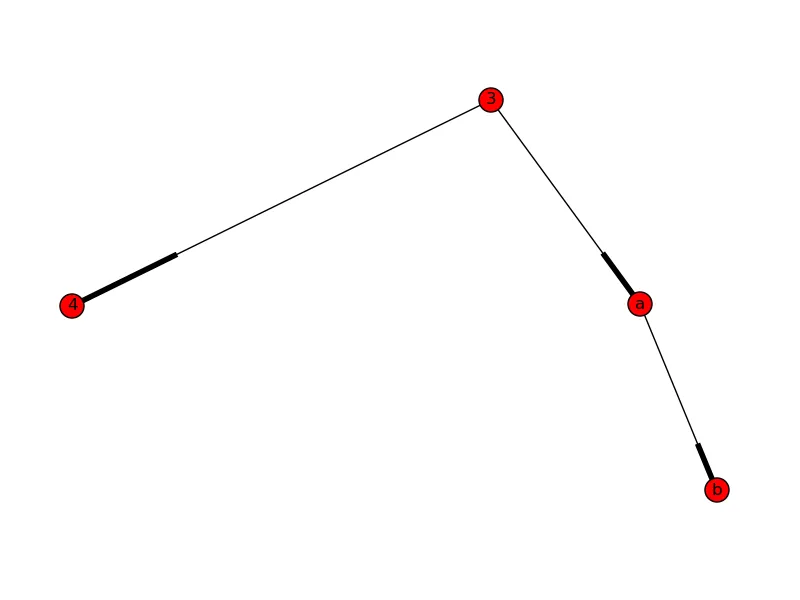我希望能够通过节点获取子图(红色区域):
所得到的子图由从输入节点可达的所有节点组成。
例如G.subgraph(3)返回一个新的有向图,其中包含红色区域中的所有节点。
例如我创建了这样一张有向图:
import networkx as nx
G = nx.DiGraph()
G.add_path([1,2,3,4])
G.add_path([3,'a','b'])
A = nx.to_agraph(G)
A.layout()
A.draw('graph.png')
我研究了 https://networkx.github.io/documentation/latest/reference/generated/networkx.Graph.subgraph.html 并将它转换为单向图。我测试了 _egdes、strong/weak_connected_component,但从未成功过。 我还看了 如何在有向图中查找子图而不转换为无向图? 和 Networkx:提取包含给定节点的连通分量(有向图)。
我知道 Subgraph 在 DiGraph 中不起作用。
请问有人能告诉我如何做到这一点吗?结果图形最好也是一个 DiGraph。


